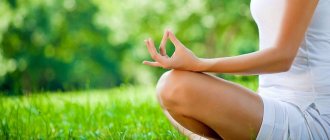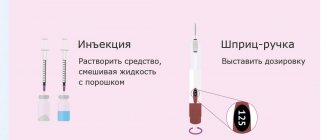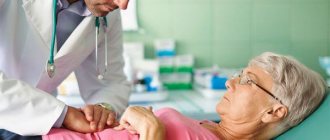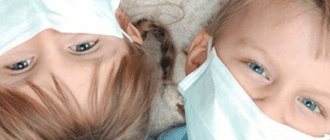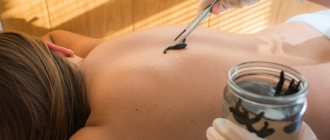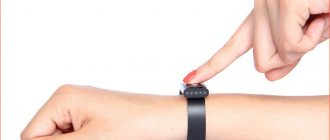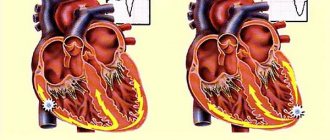Indications for use
For therapeutic purposes for:
- spasms of smooth muscles associated with diseases of the biliary tract: cholecystolithiasis, cholangiolithiasis, cholecystitis, pericholecystitis, cholangitis, papillitis;
- spasms of smooth muscles in diseases of the urinary tract: nephrolithiasis, urethrolithiasis, pyelitis, cystitis, bladder tenesmus.
As an auxiliary treatment for:
- spasms of smooth muscles of the gastrointestinal tract: gastric and duodenal ulcers, gastritis, cardio- and/or pylorospasm, enteritis, colitis, spastic colitis with constipation and irritable bowel syndrome accompanied by flatulence;
- tension headache;
- gynecological diseases (dysmenorrhea).
In what cases should you consult a doctor?
In people who rarely drink, a hangover headache usually goes away within 1-3 days after proper sleep and rest. You should immediately consult a doctor if you are dependent on alcohol and experience the following symptoms:
- throbbing headache localized in one place, most often in the parietal region;
- dizziness, nausea, vomiting;
- blurred vision;
- swelling;
- headache does not go away for 3 or more days, gradually increases;
- confusion.
A severe headache, which is accompanied by these symptoms, is a sign of acute intoxication, and can also be a harbinger of a hypertensive crisis, cerebral edema, heart attack or stroke. People over 35 years of age who suffer from chronic diseases are at particular risk. If one or more signs appear after exceeding the dose of alcohol, it is better to consult a narcologist.
The doctor will conduct a thorough examination, measure pulse, blood pressure, and, if necessary, prescribe a blood test and cardiogram. Based on the results of the examination, the specialist will prescribe the necessary medications and give recommendations for getting rid of headaches. An IV will help you get out of an unpleasant state quickly and safely. During infusion therapy, sorbents, antispasmodics, painkillers, and a vitamin complex are used. Unlike oral administration, medications administered intravenously act within 30-60 minutes, quickly relieving headaches and other symptoms of a hangover.
If the patient has a long-term drinking binge, has chronic diseases, alcohol dependence, or life-threatening symptoms, hospitalization is recommended. The clinic uses additional methods for treating headaches:
- plasmapheresis
. Alcohol enters the bloodstream during intoxication, so hardware blood purification quickly removes toxins and eliminates hangover symptoms. Plasmapheresis is effective in the treatment of concomitant diseases; - xenon therapy
. Xenon inhalations have a mild sedative and analgesic effect. The gas stimulates metabolic processes and restores nervous activity. Xenon therapy quickly eliminates headaches and has no contraindications or side effects.
If you experience even a minor hangover headache, it is better not to experiment with traditional methods, not to self-medicate, but to seek help from a specialist. An experienced narcologist will help you quickly cope with an unpleasant condition without consequences for your health.
Advantages
Antispasmodics affect smooth muscles and relieve pain caused by spasms. The antispasmodic drug drotaverine is used in gastroenterology, therapy, urology and gynecology in many countries around the world.
- Gastroenterology. In this area, the drug is prescribed for spastic pain accompanying pathology of the biliary tract - cholelithiasis, acute or chronic cholecystitis, cholangitis, etc.
- Urology. Inflammatory processes in the urinary organs (cystitis, pyelitis) can also lead to spasms, so the use of drotaverine for these diseases is completely justified.
- Tension headaches. Drotaverine
The favorable safety profile has been confirmed by numerous clinical studies.
How to get rid of headaches yourself using traditional methods
There are several ways to get out of an unpleasant condition at home without the help of a doctor. These methods are suitable if the person suffering from headaches does not have an alcohol addiction, and the drinking was a one-time occurrence.
Drinking regime
Alcohol dehydrates the body and washes away beneficial microelements, so after a heavy libation you should take more liquid. If you abuse alcohol, it is recommended to drink:
- water. Preference is given to alkaline mineral water without gas. It contains potassium, magnesium, and helps quickly restore electrolyte balance. Regidron solution has a similar effect. Within a few hours after administration, it significantly improves well-being, relieves pain, as it accelerates the elimination of toxins;
- brine. In just a few minutes it will improve your well-being, give you vigor and relieve discomfort due to its high content of electrolytes. It is best to drink cabbage brine. It contains succinic acid, which stimulates the liver, accelerates the breakdown and excretion of ethanol, and eliminates hypoxia of brain cells. Brine should not be consumed by people with high stomach acidity;
- freshly squeezed juices, fruit drinks;
- ginger decoction. It has a mild sedative effect, restores vascular function, eliminates headaches, and thins the blood. The drink should not be taken by people with gastrointestinal diseases.
It is better to avoid tea and coffee. Drinks have a diuretic effect and wash away beneficial microelements, which are already in short supply after alcohol abuse.
In addition to following the drinking regime, it is recommended to eat vegetables and fruits that contain sufficient liquid - cucumbers, broccoli, zucchini, celery, watermelon, citrus fruits. Walking in the fresh air and sleeping in a cool, well-ventilated room will also help cope with headaches.
Water treatments
A hot bath, steam bath, or sauna will speed up the removal of toxins and reduce swelling. Only people who do not have problems with the cardiovascular system can take the procedure, otherwise irreparable harm to health can be caused. For the same reason, you should not take a contrast shower. This threatens a heart attack or stroke.
To improve your well-being, it is best to take a bath with water at room temperature. It will allow you to relax and have a tonic effect. You can add herbs that have a calming and relaxing effect to the water - chamomile, valerian, motherwort, lemon balm, mint. It should be remembered that herbal medicine has contraindications and can cause a severe allergic reaction.
New dose of alcohol
Alcohol abusers believe that the easiest and most effective way to get rid of headaches is to get drunk. A glass of beer or a glass of vodka will bring relief in a matter of minutes, but in no case should you resort to this method
. Unpleasant sensations can be eliminated for a short time. Then the pain will return and become more intense. To alleviate the condition, you will need a new dose of alcohol. This will create a binge, the exit from which will require significant effort. In this case, you cannot do without the help of a narcologist.
Traditional methods of combating headaches that seem harmless at first glance may turn out to be useless, and in some cases, aggravate the condition and lead to complications. Even if you feel slightly unwell after drinking too much alcohol, it is best to consult a doctor. The doctor will give advice on how to quickly and safely get out of a painful condition.
Directions for use and doses
Adults: The usual average dose is 120-240 mg per day in 2-3 divided doses.
Children over 12 years of age: if necessary, as prescribed by a doctor, the maximum daily dose is 160 mg (1/2 tablet 2-4 times a day).
The duration of treatment is determined by the doctor individually.
The NO-SPA Ò forte tablet can be divided in half.
Children
The use of the drug in the treatment of children under 12 years of age is contraindicated.
Use during pregnancy or breastfeeding
Pregnancy. The results of retrospective clinical studies showed that oral administration of the drug did not cause any evidence of any direct or indirect effect on pregnancy. However, caution should be exercised when prescribing the drug to pregnant women.
Lactation. Due to the lack of data, use of the drug during breastfeeding is not recommended.
What we are treated with: No-shpa. How does a popular antispasmodic work?
What scientific research says about the popular anti-spasm drug, No-shpe, what it has in common with Viagra, where autocracy reigns in our body and where is parliamentary democracy, how the medicine helps during childbirth and what does the lost chess talent have to do with it, read in the section “What are they treating us with?”
No-shpa is one of the most popular antispasmodics in Russia. However, it is practically not sold abroad anywhere except in the countries of Eastern Europe and Asia, and many English-language sources write about its active ingredient only as an intravenous medicine to reduce pain during prolonged labor pains.
In Russia, No-shpa is included in the “List of Vital and Essential Medicines”. This list was created to regulate prices in pharmacies, so when choosing a medicine, you should not rely solely on it. As we already found out in the case of Kagocel, this also includes drugs that cannot be unambiguously recommended as having definitively proven their effectiveness, and in some years - simply charlatan drugs.
But in the list of the World Health Organization and on the website of the American Food and Drug Administration, the drug is more likely to be found in quotations from the guidelines of individual countries, for example Ethiopia or Afghanistan, which are unlikely to have the most exemplary level of medicine in the world.
Can No-shpa be used and for what purpose? What are the contraindications? What kind of pain is best left to non-steroidal anti-inflammatory drugs or analgin? Let's try to figure it out.
From what, from what?
The main active ingredient of No-shpa is drotaverine (in the form of hydrochloride), contained in tablets in an amount of 40 mg. This substance is a modification of papaverine, an antispasmodic and analgesic produced from the opium poppy. Despite this, papaverine is very different in structure and properties from substances obtained from morphine. Papaverine was invented by Georg Merck, a student of the famous chemists Justus Liebig and Albert Hoffmann and the son of the same Emmanuel Merck who founded the famous German pharmaceutical corporation.
Structure of papaverine
Both substances are similar in their formula: in the center there are the same three aromatic “rings”. Drotaverine was registered in Hungary at the dawn of the sixties of the last century by researchers. The medicine was called No-shpa (short for the Latin no spa - “no spasm”).
Structure of drotaverine
According to the instructions, 65% of the dose taken enters the blood. A blood test can easily show whether drotaverine is in the blood. It reaches its maximum concentration after about 45-60 minutes, and is completely eliminated from the body after three days. This allows you to find out whether a person has taken the medicine and study how it is transported throughout the body and where it is broken down. Some manufacturers write (for example, in the “Pharmacokinetics” section) that their substances are not determined in the blood by available methods, which makes us wonder whether there is any active substance there at all, or whether we are faced with yet another homeopathy.
But what should he influence there? According to drug website DrugBank, drotaverine blocks the enzyme phosphodiesterase type 4 (PDE 4). This same information is listed in the instructions and in the introduction to several scientific articles as known, but there are no articles that clearly describe the mechanism by which the drug binds to this enzyme.
The group of enzymes itself got its name in honor of phosphodiester bonds. The job of the FDE is to destroy these connections. Depending on the type, each of which has its own number, PDEs specialize in different molecules. Too active PDE activity can be associated with various diseases. Phosphodiesterase 3, for example, affects the contraction of the heart muscle. Its deficiency blocks the His bundle, which carries signals to the heart, which can cause it to stop. PDE 5 is affected by drugs to increase potency (for example, Sildenafil, which is sold under the brand name Viagra). The drug to block PDE 4 must be very specific so as not to cause serious side effects.
PDE 4 itself is involved in many reactions, including inflammatory processes (which is why drugs that suppress it are prescribed for pulmonary obstruction), Parkinson's disease and even schizophrenia. The target in which PDE 4 cleaves phosphodiester bonds is called cAMP, a derivative of ATP (the main molecule for storing energy in cells). Working at the beck and call of other hormones and molecules (in this case, the substance is called a second messenger), cAMP can activate calcium channels that allow positively charged calcium ions into the cell. Normally, there are more calcium ions outside the cell than inside. When Ca2+ rushes into the cell, sodium channels in it are also activated. As a result, the charge of the cell changes, and since muscle contractions depend on this charge, the suppression of PDE 4 ultimately affects them. There are also several scientific works in favor of the hypothesis that drotaverine can act on calcium channels directly.
Democracy of the heart, authoritarianism of the hand
All human muscles are divided into three types. Cross-striped, also known as skeletal, are often attached to bones and are responsible for our movements. In the world of striated muscles there is complete authoritarianism: we can subordinate them to our direct will: raise a leg, wave a hand.
Striated muscles
In our hearts, on the contrary, parliamentary democracy reigns. The heart muscle consists of a special type of cells that are connected in a kind of network. Their electrical signals constantly excite neighboring cells to keep them contracting. The contractions themselves occur automatically and are initiated not only “from above”, but also by the heart’s own nerve fibers, therefore power in it is given to the “people” and elected representatives.
Smooth muscles are close in degree of freedom to the myocardium: they contract against our will, although they are controlled by many electrical and chemical signals, hormones, and the autonomic nervous system. But they do not have such developed “local self-government” as the heart does: the cells of these muscles are not connected by “bridges”. It is the layer of smooth muscles in the walls of blood vessels and hollow internal organs that causes them to contract, regulating blood flow, the expansion and contraction of the bronchi, the movement of food through the intestines and many other processes.
It is spasm (involuntary contraction) of smooth muscles, or more precisely, spasm of smooth muscles of the urinary tract and biliary tract that is considered the main indication for taking No-shpa according to the instructions. The drug is also recommended as an adjuvant for tension headaches caused by the head being in one position for a long time, and its muscles (here they are no longer smooth, but striated) become numb, dysmenorrhea (menstrual pain), and spasms of the gastrointestinal tract.
Not on the lists
We've sorted out the theory, but what about clinical trials? Over more than half a century, a lot of them have been carried out. But most of them belong to the middle of the last century, when the requirements for testing new drugs before entering the market were completely different. Therefore, only a small number of articles about No-shpe and drotaverine meet the criteria that apply to modern drugs, that is, they relate to randomized, double-blind, placebo-controlled studies.
A double-blind, randomized, placebo-controlled method is a method of clinical drug research in which the subjects are not privy to important details of the study. “Double blind” means that neither the subjects nor the experimenters know who is being treated with what, “randomized” means that the assignment to groups is random, and placebo is used to show that the effect of the drug is not based on self-hypnosis and that This medicine helps better than a tablet without active ingredients. This method prevents subjective distortion of the results. Sometimes the control group is given another drug with proven effectiveness, rather than a placebo, to show that the drug not only treats better than nothing, but is superior to its analogues.
Let's consider those tests that meet these criteria. These include two studies assessing the effectiveness of drotaverine in renal colic: the first compared with placebo, the second with diclofenac. Both studies showed an approximately 50% superiority of therapy with drotaverine when tapering, but in rather modest samples: in both cases, participants included about a hundred patients.
Indian scientists investigated whether drotaverine helps with recurring lower abdominal pain in children. Scientists analyzed the condition of 132 children aged 4 to 12 years, half of whom received syrup with dissolved drotaverine, and the other - just syrup. The children who received the medicine complained of pain less often and began to miss school less, although the number of days when they were pain-free was comparable in both groups. At the same time, the children in the drotaverine group were more active, their mood improved, and they began to eat better. Doctors concluded that the medicine is safe and effective.
Drotaverine was compared with placebo and in irritable bowel syndrome. The authors noted that thanks to it, pain attacks became less frequent and weaker, as observed by both patients and doctors (and, unlike the Ergoferon study, which was similar in design, the reviews of doctors and patients coincided).
A study of the effectiveness of combining drotaverine with aceclofenac compared with aceclofenac alone for menstrual pain showed that the combination helps patients cope with pain faster and better. But how is an honest double-blind study possible when patients in the first group receive one tablet, and the second - two? Scientists have found a way to deal with this by blinding both groups.
To do this, those who received only aceclofenac were given a second placebo tablet, which in appearance was indistinguishable from the tablet with drotaverine. Although the group size was small (100 people each), and the study was sponsored by the Indian manufacturers of the drotaverine-based drug, there are no particular complaints about the study design itself.
No-shpa: from birth to death
Despite the large number of different studies, there was only one review of them by the Cochrane Collaboration, and it was devoted to the effect of antispasmodics on labor pains.
The Cochrane Library is a database of the Cochrane Collaboration, an international non-profit organization involved in the development of guidelines from the World Health Organization. The organization's name comes from its founder, the 20th-century Scottish medical scientist Archibald Cochrane, who championed the need for evidence-based medicine and good clinical trials and wrote the book Efficiency and Effectiveness: Random Reflections on Health Care. Medical scientists and pharmacists consider the Cochrane Database to be one of the most authoritative sources of such information: the publications included in it have been selected according to the standards of evidence-based medicine and report the results of randomized, double-blind, placebo-controlled clinical trials.
The review authors emphasize that labor pains lasting more than 12 hours can exhaust a woman and cause her a lot of suffering, and even create a risk of large blood loss. Having collected data from twenty-one trials of antispasmodic drugs, including drotaverine, on more than 3,200 women in labor, experts came to the conclusion that these drugs help reduce the duration of the first stage of contractions, although they do not affect the second and third. Overall the evidence is described as "low quality", but there is stronger evidence that drotaverine did not harm patients or their children.
And yet, antispasmodics can not only help the birth of a child, but also lead to the death of a person. Its main cause is overdose, many cases of which are described in the scientific literature. According to relatives and according to test results that were distributed in the media, it was because of an overdose of No-shpa that a very young chess player, Ivan Bukavshin, a member of the Russian youth team, who had repeatedly won prizes at world championships, died. The parents even stated that ill-wishers added No-shpa to their son’s food and drinks: a dose four times higher than the lethal dose, according to them, the athlete could not drink himself. We don’t know whether it was accidental poisoning, murder or suicide, but we know for sure that an overdose of antispasmodics does not promise anything pleasant.
Indicator.Ru recommends: use for spasms of certain smooth muscles, beware of overdose
The main studies available today were on small samples, but overall they show the effectiveness of the drug. But do not forget that No-Spa is intended for pain associated with spasms of smooth muscles (for example, muscles of the bladder, bile ducts, intestines). It can help with cholecystitis, renal colic and menstrual pain, but, say, with a fracture, it is very unlikely. Therefore, if you have acute pain after surgery or any other pain that is not associated with spasms, you should turn to a different type of pain reliever, such as non-steroidal anti-inflammatory drugs.
Despite the selectivity of the drug’s action, its overdose has more than once led to cardiac arrest and other serious consequences, so you should not take risks by taking large doses of No-shpa (especially if you already have heart problems). If the prescribed dose does not help within two days, you should not increase it, but consult a doctor to determine the cause of the pain and treat it, rather than suppress the symptoms. Even with renal colic, in which No-shpa can play the role of an anesthetic, the patient still needs to be hospitalized, since this syndrome is a sign of a serious dysfunction of the organ, possibly the appearance of stones in the kidneys that require removal.
Hypersensitivity to any of the components of the drug, including auxiliary ones: glucose, galactose, corn starch and others, as well as acute renal and liver failure (drotaverine is broken down in these organs) should also force you to abandon the drug. The effect of No-shpa on young children (up to six years old), pregnant and lactating women has not been fully studied, so in these cases you need to consult a doctor who will decide whether this is a necessary measure, or whether it is not worth exposing yourself or your child to danger.
No-spa also reduces the effect of levdopa (this drug is prescribed for Parkinson's disease), which should be taken into account by those who use this drug.
First published in Indicator magazine, 07/13/2017
Note!
Description of the drug No-shpa forte table. 80mg No. 24 on this page is a simplified author’s version of the apteka911 website, created on the basis of the instructions for use.
Before purchasing or using the drug, you should consult your doctor and read the manufacturer's original instructions (attached to each package of the drug). Information about the drug is provided for informational purposes only and should not be used as a guide to self-medication. Only a doctor can decide to prescribe the drug, as well as determine the dose and methods of its use.
